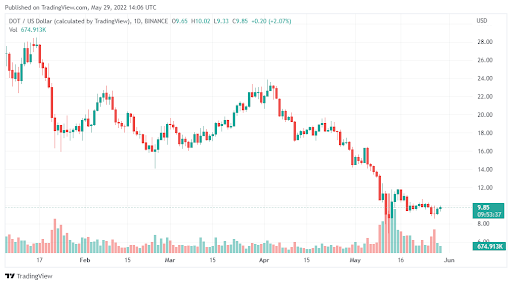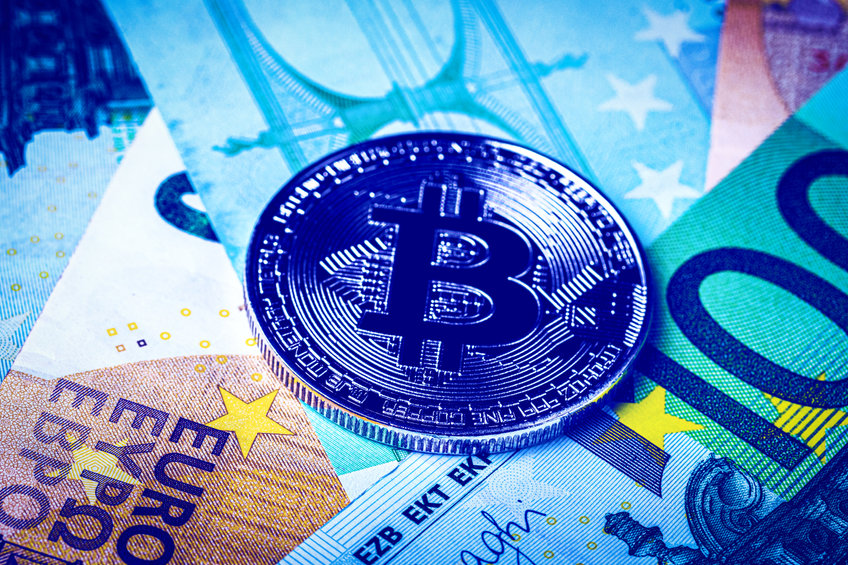
Polkadot (DOT) has finally managed to stop its prolonged correction. The price appeared to have settled a bit after bottoming at around $7.35. DOT now has a good opportunity to reverse the downtrend and could rally significantly despite growing uncertainty in the market. Here are some points:
-
DOT is testing the $10 which could be significant in any bull run
-
It’s the first time the coin has reported gains after 4 days of retreat
-
Crossing the $10 could trigger a rally towards $13 or thereabout
 Data Source: TradingView
Data Source: TradingView
Polkadot price analysis and prediction
The most important thing for DOT bulls is that the downtrend appears to have slowed. The coin had reported losses in 4 straight sessions, and there were fears it could actually fall below $5 for the first time this year. But it seems the price action started to consolidate at around $7.35.
Eventually, DOT was able to trigger a run and is now trying to cross above $10. If indeed this happens, we could see the token rally towards $13 or beyond. This will represent an upswing of around $30 from this price. However, despite this bullish outlook, there are still several uncertainties in the market.
For example, we have not seen enough trading volume to suggest DOT is going bullish. It is possible that DOT may in fact get rejected at the $10. This will push it downwards toward its previous bottom price of $7.35. But if bulls are not able to keep the price above $7.35, there will be more downside to come.
How to trade DOT in this setup?
The first entry would be above $10. If DOT is able to cross above this price, then you can buy and exit at $13.
However, if the price action remains suppressed below $10, then wait for it to bottom at around $7 before you buy. But there is a risk that a drop towards $7 could continue until DOT hits $5.
The post Polkadot could still hit a bull run despite uncertainty appeared first on CoinJournal.




